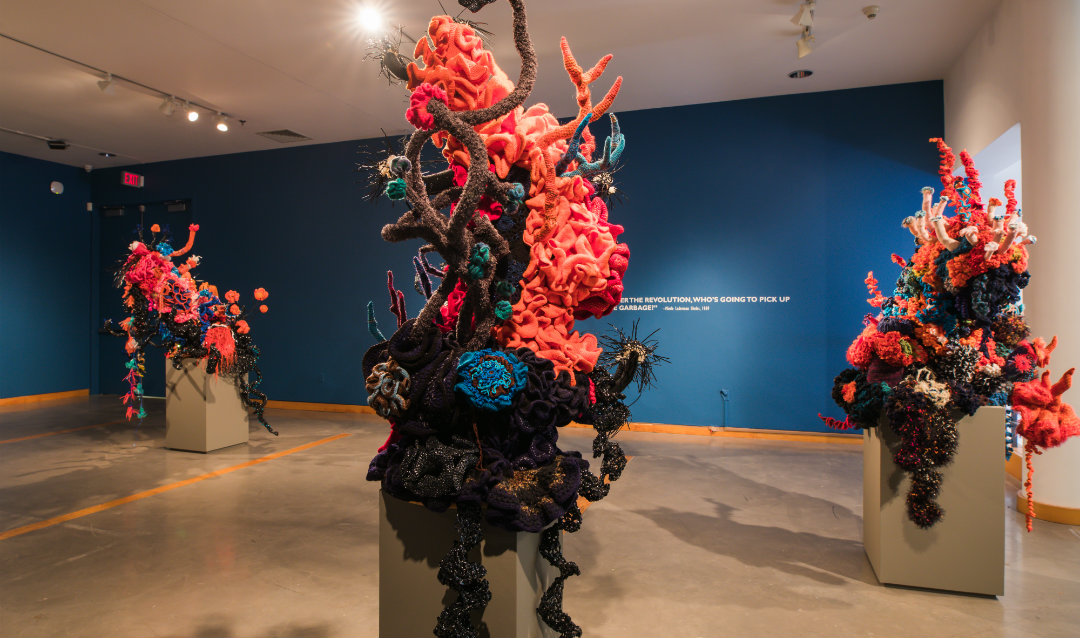This was the opening day for Raise the Reef Tuesdays, an interactive art project that is part of the Crochet Coral Reef on exhibit through Dec. 7. The project, brought to life by sisters Margaret and Christine Wertheim, and their California-based Institute for Figuring, seeks to raise awareness about climate change by helping people to visualize the impact of pollution on the environment. The project brings a global issue to a local level so that communities can better grasp the environmental problems the world faces.
“It’s a new opportunity for us to not only reach the greater Lehigh community, the faculty and their children, but also the surrounding community in Bethlehem,” said Hortner. There are “so many wonderful things” about the project, she said, including the community’s involvement in creating the Lehigh Satellite Reef and the attention being drawn to the dangers of pollution on coral reefs. The satellite reef will become an accessioned artwork when completed.
“People should not be intimidated [in joining in the crocheting],” said Hortner. “If they want to try it, they should, or even just observe, because they might be tempted to pick up a hook.”
“Raise the Reef Tuesdays,” held Tuesdays from 5:30 to 7 p.m., will continue through Dec. 3. Through the interactive sessions, LUAG is advancing its mission to “advance critical thinking, cultural understanding, and well-being for campus and community through transformative experiences with art.”
Hands-on, interactive art projects give students, local artists and faculty the opportunity to forge connections with one another and become active participants in climate change discussions, said Mark Wonsidler, LUAG’s curator of exhibitions and collections.
“The thing that I think is at the heart of [the project] is this idea of a form of embodied knowledge that exists at the intersection of many different disciplines--the way that making something by hand changes the way you think, and opens up new possibilities,” he said.
Brennan said an exhibition that encompasses hands-on learning is important, as many people are sensory and tactile learners. The interactive aspect helps people to absorb what the art is meant to teach, she said.
The Coral Forest sculptures on display at LUAG are littered with plastic objects such as grocery bags and little creamer cups, mimicking ecosystems that have been affected by pollution.







